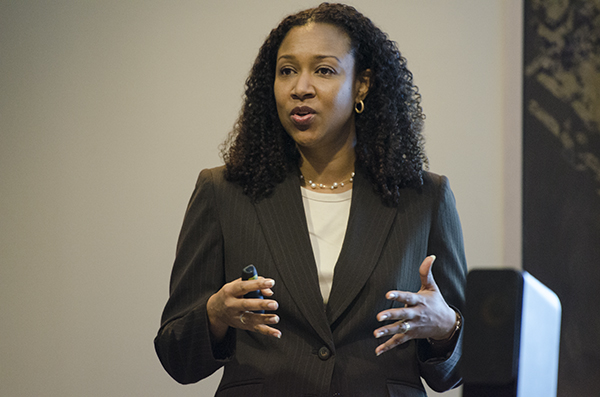
A recent study of enrollment trends showed that the Black student population at SUNY New Paltz is decreasing at a consistent rate.
The study, completed by Undergraduate Admissions at New Paltz, indicated the percentage of first-year Black students has dropped from 11 to 6 since 2003. The percentage of Black transfer students has gone down by 2 since then, while the total number of undergraduate Black students has decreased well.
Student Association (SA) President Josh Simpson said enrollment numbers are compiled at the end of every year. He and other SA E-board members were first made aware of the numbers at the February cabinet meeting.
Simpson said the drop in percentages wasn’t something he anticipated on a campus like New Paltz.
“I found the numbers shocking when I first saw them,” Simpson said. “We promote diversity here, so to see a drop like that in one population is shocking.”
Simpson said during the cabinet meeting, President Donald Christian said the population percentages of Black students have dropped, but the overall diversity percentages have remained the same.
Vice President of Academic Affairs and Governance Jonathan Espinosa said, like Simpson, he was shocked to see the population of Black students decline “so consistently.” He also said he was dissatisfied with the school’s usage of the word “diversity” when promoting its image.
“The school loves to promote diversity, but they’re not very clear on what that word means,” Espinosa said. “When they use that word, they don’t specify racial diversity, or religious diversity, cultural diversity…There’s different kinds of diversity.”
The percentages of different student races have fluctuated within the past 10 years, but the Black student population is the only one to have shown a decrease in that time. First-year percentages for white students have increased 9 percent, while the population for Latino students and Asian students has increased 1 percent each. The percentage of undergraduate Caucasian students and Latino students has gone up 3 percent.
Espinosa said he believes the reason for a decrease in New Paltz’s Black population relates to a larger-scale issue.
“The bigger picture is that Black males are being incarcerated at higher rates throughout the country,” Espinosa said. “It’s an attack on the Black community. It’s an attack on young Black males and if you don’t have a population from which to get students, you’re not going to see that reflected in the school.”
Campus Climate Director Tanhena Pacheco-Dunn said there are other factors that “may be” what reflects a decrease in not just New Paltz’s black student population, but in other colleges across the country.
“There are lots of sociopolitical issues affecting the communities of students of color, and each has different but specific reasons for why they aren’t sending those students to college,” Pacheco-Dunn said. “Some of it is financial access and I don’t think that that’s secret. On the other hand, there are students that go through K-12 systems that are not unified in their standards and they leave students underprepared for higher education.”
Simpson said with these numbers, he and other members of the SA E-board are “throwing ideas around” about how they should use the $10,000 diversity grant that was awarded to the school at the beginning of the year.
While one idea was to use the money as a scholarship, the E-board decided against it because the scholarship would only be awarded once. The money was originally going to be used to hold four fora which would cover issues of race, transgender issues, students with disabilities and sexual assault. However, Simpson said this was a “dream,” and there are better uses of the money the E-board are currently thinking about.
“We’re currently looking at using the money to go down to schools in the city and talk with prospective students about New Paltz,” Simpson said.
Espinosa believes a trickle-down effect could increase the Black student population.
“I think students of color are discouraged when they see most of their professors are older, white males,” Espinosa said. “I think more students would want to come here if professors of color were hired, and if this were to happen, we could go from there.”

